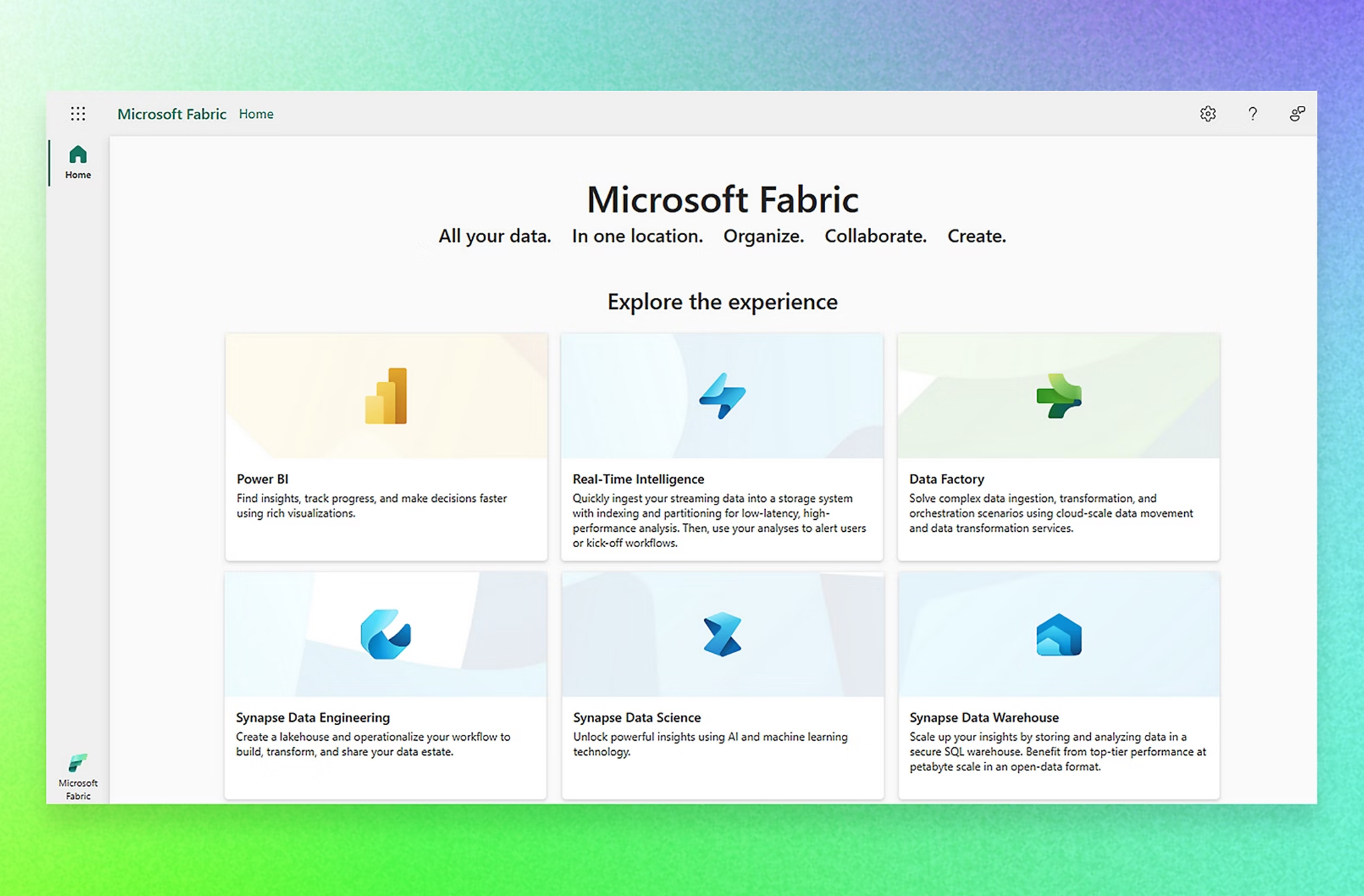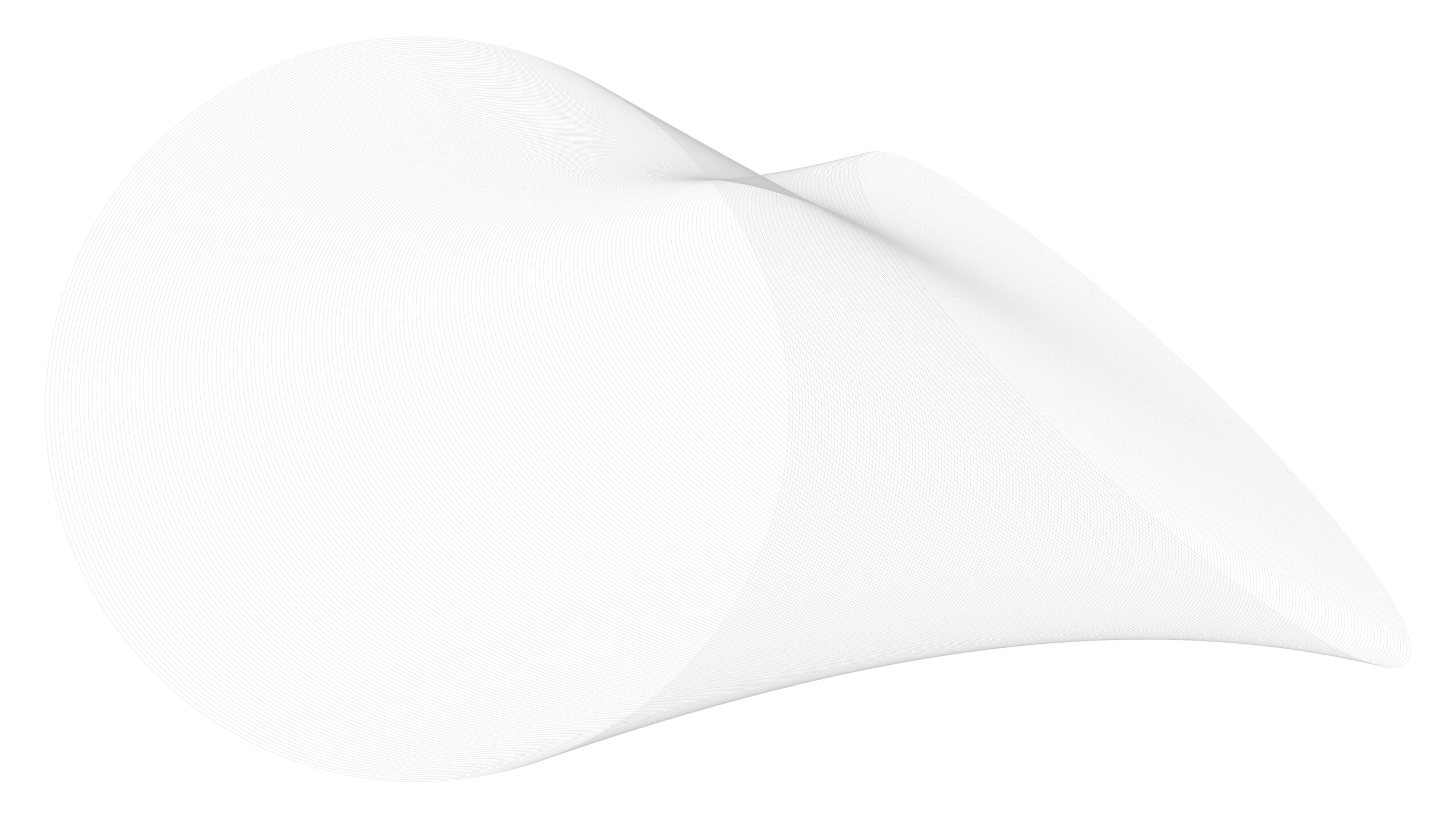
Accelerate your use
of data assets on
Microsoft Azure

With the emergence of Microsoft Fabric, many organisations are reassessing their data analytics strategies. Key questions include: Should you migrate from Azure Synapse Analytics to Fabric? Is Fabric set to replace Synapse entirely? In this post, we’ll explore these questions, explaining when each platform can be the better option, and highlight why organisations new to Azure data services should consider starting with Fabric.
We’ll also discuss some of the standout features in Fabric’s latest release, including key insights from recent Fabric feature previews.
Should you migrate from Azure Synapse Analytics to Fabric? Is Fabric set to replace Synapse entirely?

Understanding Microsoft Fabric and Azure Synapse Analytics
Before making platform design or platform migration decisions, it’s essential to understand the capabilities each respective platform provides.
Azure Synapse Analytics is a powerful analytics service that brings together enterprise data warehousing and big data analytics. It gives you the freedom to query data however you want – using either serverless or dedicated compute resources – at scale. The stitching together of data services, such as using Apache Spark, for example is more in your control.
Microsoft Fabric, on the other hand, is an end-to-end analytics solution that unifies various data services into a single, unified platform. It integrates capabilities from Azure Data Factory, Azure Synapse Analytics, and Power BI into a cohesive experience, simplifying the analytics process. It’s more about convention than configuration with user journeys designed against key data roles, such as analyst or data scientist, for example.

Should you migrate from Synapse to Fabric?
For organisations already using Synapse
Unified experience vs. specialist data tools
- Fabric’s unified platform: Fabric offers a seamless experience by integrating data engineering, data integration, data warehousing, data science, real-time analytics, and business intelligence. If your organisation values a one-stop-shop for all analytics needs, Fabric could be a solid option.
- Synapse’s specialized capabilities: Synapse excels in scenarios requiring deep customisation and control over data warehousing and big data processing. If your workloads rely heavily on Synapse’s specialist features, migrating may not offer immediate benefits – at least not until Fabric features catch up.
SaaS vs. PaaS
- Fabric as SaaS: Fabric is delivered as Software-as-a-Service (SaaS), simplifying management and reducing infrastructure overhead. It abstracts much of the complexity involved in setting up and maintaining analytics solutions.
- Synapse as PaaS: Synapse operates as a Platform-as-a-Service (PaaS), providing more control over the environment but requiring more management effort. Organisations needing granular control might prefer to stick with Synapse.
Cost Considerations
- Potential savings with Fabric: Fabric’s unified pricing model could lead to cost savings by reducing the need for multiple services. Evaluate your current spending on Synapse and related services to determine if Fabric offers a financial advantage.
Migration Effort
- Assessing the transition: Migrating to Fabric isn’t just a lift-and-shift operation. Due to architectural differences, careful planning is necessary to ensure a smooth transition. Weigh the costs of reconfiguring workloads and retraining staff against the potential benefits.
For organisations new to Azure
- Starting with Fabric: Fabric’s integrated platform makes it easier for organisations new to Azure to get started with data analytics. There’s no need to stitch together multiple services; Fabric provides a comprehensive data and AI suite out of the box with sensible defaults, such as security.
- Futureproofing: By starting with Fabric, new organisations position themselves to leverage Microsoft’s latest innovations in analytics, including AI integration and real-time analytics.

Will Fabric replace Synapse?
While Fabric represents the future direction of Microsoft’s analytics offerings, Azure Synapse Analytics isn’t being depreciated in the short term. Here’s why:
- Complementary roles: Fabric and Synapse serve different needs. Synapse is ideal for organisations requiring extensive customisation and control, while Fabric caters to those seeking an integrated, or more managed SaaS experience.
- Ongoing support and investment: Microsoft continues to invest in Synapse, providing updates and support. Organisations can confidently continue using Synapse where it fits their needs. Many of the tools are the same.
- Transition path: For organisations considering a move to Fabric, a gradual transition can mean leveraging Fabric’s new features while maintaining critical workloads on Synapse.

Latest features in Microsoft Fabric
The newest release of Microsoft Fabric brings several interesting features that enhance its appeal:
- Enhanced AI integration with Copilot: Fabric’s Copilot leverages advanced AI to allow users to interact with data using natural language. This democratizes data access, enabling business users to generate insights without deep technical expertise.
- OneLake – unified data lake: OneLake acts as a single, unified data lake for all your analytics data. It eliminates data silos, providing consistent data access across the organisation.
- Real-time analytics: Fabric now offers improved real-time analytics capabilities, allowing organisations to process streaming data and make decisions based on the most current information.
- Unified compute infrastructure: Fabric’s unified compute infrastructure optimises resource utilisation across different workloads, enhancing performance and reducing costs.
- Integrated data governance: With integrated data governance features, Fabric ensures compliance and security, providing tools for data cataloguing, lineage tracking, and access control.

Use Cases: When to choose Synapse vs. Fabric
Azure Synapse Analytics
- Complex, custom analytics solutions: Organisations needing highly customized analytics solutions with specific configurations may prefer Synapse’s flexibility.
- Granular control over resources: Synapse allows detailed control over compute resources, essential for certain enterprise workloads.
- Established workloads: If your existing workloads are deeply integrated with Synapse and performing well, maintaining the status quo might be advisable.
Microsoft Fabric
- Unified analytics needs: For organisations seeking a streamlined, integrated platform covering the entire analytics lifecycle, Fabric is ideal.
- Ease of use: Fabric’s user-friendly interface and AI-powered features make it accessible to a wider range of users, from data engineers to business analysts.
- Starting fresh: New organisations or those without extensive existing analytics infrastructure can benefit from starting with Fabric, avoiding the complexity of integrating multiple services.
Key Considerations
- Platform differences: Fabric’s SaaS model simplifies management and reduces infrastructure overhead, while Synapse’s PaaS model offers more control but requires more effort.
- Migration complexity: Moving from Synapse to Fabric isn’t straightforward due to differences in architecture. Planning and careful execution are necessary to ensure continuity.
- Cost implications: Fabric’s unified pricing model may lead to different cost structures compared to Synapse. A thorough cost analysis is essential to understand the financial impact.
- Feature overlaps and gaps: While Fabric integrates many features from Synapse, some specialised capabilities may not be fully replicated. Evaluate if Fabric meets all your functional requirements.

Alignment with your data strategy and operating model
When deciding between Azure Synapse and Microsoft Fabric, it’s crucial to consider how these platforms align with your organisation’s data strategy, data maturity, and functional operating model. Both solutions can enable transformative enterprise data practices, but successful implementation requires thoughtful planning and expertise.
Expertise remains essential
Neither Fabric nor Synapse is a fully no-code solution. Both require substantial data engineering, analysis, and management expertise to deliver compliant, impactful data products efficiently. While the inclusion of tools like Copilot in Fabric brings the promise of empowering non-data professionals, its practical application is limited without foundational data skills. True empowerment requires investment in both technology and the skill sets of those who use it.
Specialisation vs. democratization
Fabric’s capabilities provide Lakehouse architecture to a broader range of users, but this raises questions about governance and role delineation. Many organisations have deliberately moved away from a “jack-of-all-trades” approach, opting instead to hold specialist roles such as:
- Data Engineering
- Data Management
- Data Science
- Data Analysis
This separation of responsibilities has helped organisations achieve a single version of truth while improving productivity and governance. However, Fabric’s democratised approach may blur these boundaries, potentially eroding deliberate controls that are integral to high-functioning data environments.
Conversely, Synapse as part of a controlled Lakehouse architecture can be better suited to retaining these specialised roles. It excels in environments with structured, centralised governance and well-defined operational models. For organisations adopting more decentralised approaches like a Data Mesh, Fabric’s flexibility makes it a viable option.
The risk of data debt
Regardless of the platform, deployment without a clearly aligned programme of work, architecture, and functional operating model, risks compounding data debt. Key challenges include:
- Duplicated datasets: Increasing storage costs and operational inefficiencies.
- Multiple versions of truth: Compromising decision-making and trust in data.
- Compliance risks: Arising from inconsistent governance practices.
- Perma-projects: Long-running initiatives that fail to deliver actionable data products.

Capacity vs. consumption: Managing costs
A significant difference between Fabric and Synapse lies in their pricing models: capacity-based vs. consumption-based. Each model offers benefits and potential pitfalls, emphasising the need for robust governance and management.
Fabric’s capacity model
Fabric adopts a capacity-based pricing approach, like Power BI Premium. This offers the predictability of a fixed price but requires careful oversight to avoid performance bottlenecks:
- Capacity challenges: Many organizations using Power BI Premium find themselves hitting capacity limits as their usage grows. Adding new nodes is an option, but it can increase costs unexpectedly.
- Risk of overload: Fabric’s expansive toolkit increases the likelihood of hitting capacity limits as it makes advanced analytics more accessible to a wider range of users.
Synapse’s consumption model
Synapse operates on a consumption-based pricing model, which aligns costs directly with usage. This provides flexibility for organisations with fluctuating workloads but requires vigilant monitoring to avoid runaway costs.
Optimising cost
For both platforms, mature policy, process, and protocols (e.g., FinOps) are essential to optimise costs, maintain performance, and ensure value. Effective governance frameworks are critical to:
- Monitor resource usage: Avoiding unnecessary expenses.
- Set operational controls: Preventing performance degradation and compliance risks.
- Plan for scale: Ensuring scalability without financial surprises.

Existing Synapse users should think carefully before migrating to Fabric
Microsoft Fabric introduces a new paradigm in data analytics, offering a unified, AI-ready platform that simplifies data management and analytics workloads. While it has significant advantages, the decision to migrate from Azure Synapse Analytics should be based on a careful assessment of your organisation’s specific needs, existing investments, and future goals. There may be flexibility needed or specific features that it won’t yet support, such is the trade off with most SaaS solutions when compared to PaaS.
For organisations new to Azure data services, Fabric represents an attractive entry point with its integrated features and ease of use. For those already using Synapse, evaluating the benefits of Fabric’s latest features against the migration effort is essential.
Whether you choose to adopt Fabric, stick with Synapse, or use a combination of both, Microsoft provides robust tools to support your data analytics journey. However, there are prerequisites for both options, particularly in larger organisations with complex data landscapes. In both cases you need to consider:
- What specifically is required in terms of data products
- How you are going to operate in delivery of those end products as well as their use and maintenance
- How are you going to manage data as an asset in your organisation
- How are you going to manage risks associated with working with data.





